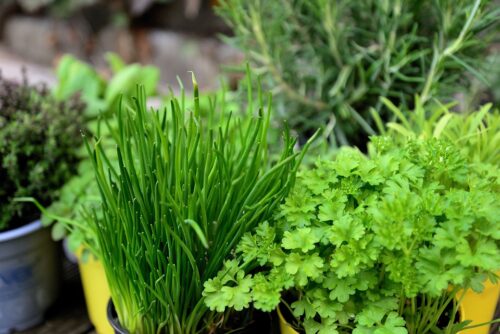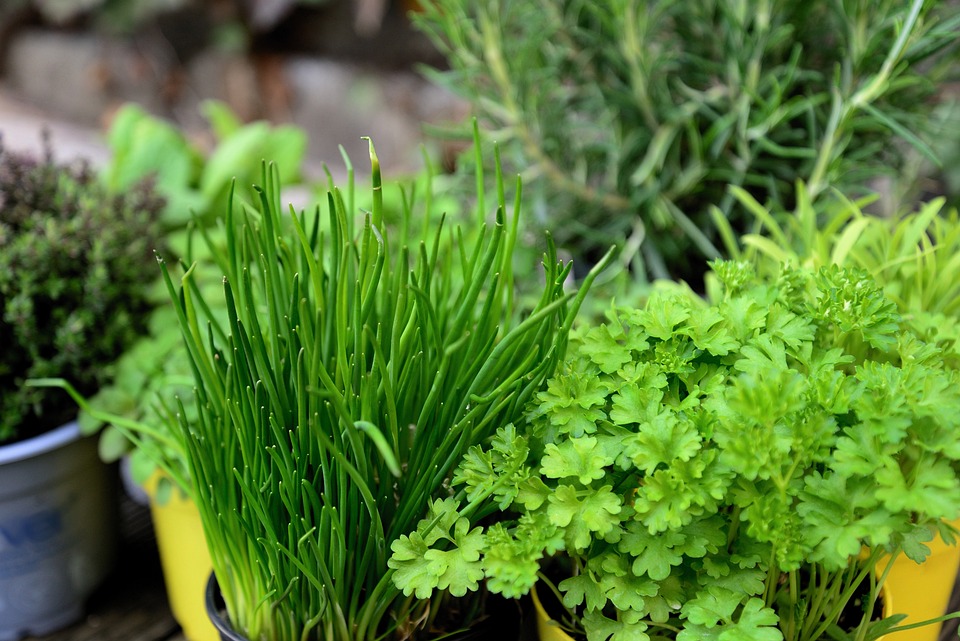Read about the herbs that are commonly used in Mexican cuisine and create a Mexican Herb Garden in your home.
If you are fond of Mexican dishes, then you have to know that some aromatic herbs play an important role in mouth-watering Mexican food. Read about the common Mexican herbs and how to grow a Mexican herb garden in the article below.
Popular Herbs that You Can Grow in Mexican Herb Garden

1. Cilantro
Cilantro is the most commonly used herb in Mexican cuisines; it adds a fresh, refreshing flavor to dishes. This herb has a dual personality; in the early vegetative phase, the leaves are used to season Mexican dishes, but when it produces seeds known as coriander. They are grounded and used in soups, curries, pickles, and stews.
Uses: In Mexican Shrimp Ceviche-Style Cocktail, Baked Cilantro Fish, Shrimp Ceviche, Pico de Gallo
2. Epazote
Epazote (Chenopodium Ambrosius) is a pungent, leafy, aromatic herb frequently used in Mexican dishes. Raw epazote has a pungent, resinous taste similar to anise, fennel, or tarragon but stronger.
Uses: In Quesadillas with Epazote, Mexican black beans, Garbanzo-Vegetable Soup
3. Mexican Mint Marigold
Also known as Mexican tarragon (Tagetes Lucida), it has a sweet anise-like flavor. The leaves can be used in both dry and fresh forms. The yellow flowers are edible and used to add colors in salads and desserts.
Uses: It is used in Mexican Mint Marigold Chicken Salad, Grilled Lamb Loin Chop with Roasted Mustard, Marigold mint tea
4. Papalo
Papalo (Porophyllum ruderale) has a cilantro-like taste; this Mexican herb is an ideal substitute to cilantro. It boasts a vibrant, strong flavor that gives a hint of arugula, cilantro, and a bit of rue.
Uses: Salsa Verde with Papalo, Salsa de Cacahuate y Chile, Papalo-tomatillo Guacamole
5. Mexican Pepperleaf
Also known as Hoja Santa (Piper auritum), it is a fragrant, velvety heart-shaped leaf. It has a strong flavor similar to eucalyptus, mint, peppercorn, allspice, or anise. The leaves are used as a wrap or to season fish, meat, mushrooms, and tamales.
Uses: Used in Pozole or egg dishes, Mole Amarillo, Mole Verde, Pasilla Sauce
6. Little Rosemary
Also known as Romerito or Seepweed, it looks like rosemary but has a flavor close to spinach. It can not be eaten raw and must be cooked before consumption; you can mix it with nopales (cactus), mole sauce, or potatoes. Romerito can be sauteed and added to rice and bean dishes or can be used in savory cakes.
Uses: Romeritos with Shrimp Cake, Seepweed and Seaside Salad
7. Mexican Oregano
Mexican oregano (Lippia graveolens) is praised for its fresh and earthy flavor; it is usually used to season tomato dishes. It is strong but more bitter than the Mediterranean oregano, so measure the amounts properly before use.
Uses: Ropa Vieja, Braised and shredded beef, Burritos & Tacos, Buffalo Snort Red Chili, El Torito Chicken & Lime Soup, Grilled Pizza on Portobello Crust, Navajo Green Chili, Pickled Jalapenos, Saucey Black Beans, Smokey Joe’s Texas Red Chili, Seitan Posole Stew
8. Thyme
Thyme is used in many Mexican cuisines. Its warm taste complements spicy foods. The flavor becomes more striking when thyme is frozen, so remember this if you are using it in a cuisine that will be deep-frozen.
Uses: Mexican Tacos de Birria, Easy Mexican Mole Sauce
9. Mexican Bay Leaf
Mexican bay laurel (Litsea glaucescens) has a milder flavor and thin leaves than the bay leaves (Laurus nobilis) found in the U.S., which are strong and have a harsh taste. It is used in stews, soups, broths, and rice dishes.
Uses: Mexican Pinto Beans, Mexican Menudo, Bay leaf Beet Soup
10. Lemon Verbena
Lipia or Lemon verbena (Lippia Citriodora) has a fantastic citrus aroma; the leaves hold their fragrance even after drying for years. The tea made up of lipia leaves has many medicinal properties.
Uses: Agua Fresca, Pay de Queso – Cheesecake, teas
How to Grow Mexican Herb Garden?
- Start your Mexican herb garden in spring.
- Choose an area that gets plenty of sunlight.
- Water the plants moderately, but stay alert in dry spells and keep an eye on your herbs.
- Use well-drained, fertile soil, and choose a pot with proper drainage holes.
- Each herb has slightly different growing requirements, so detailed research is needed before planting.
- Keep pruning the plants to keep the herbs healthy.



